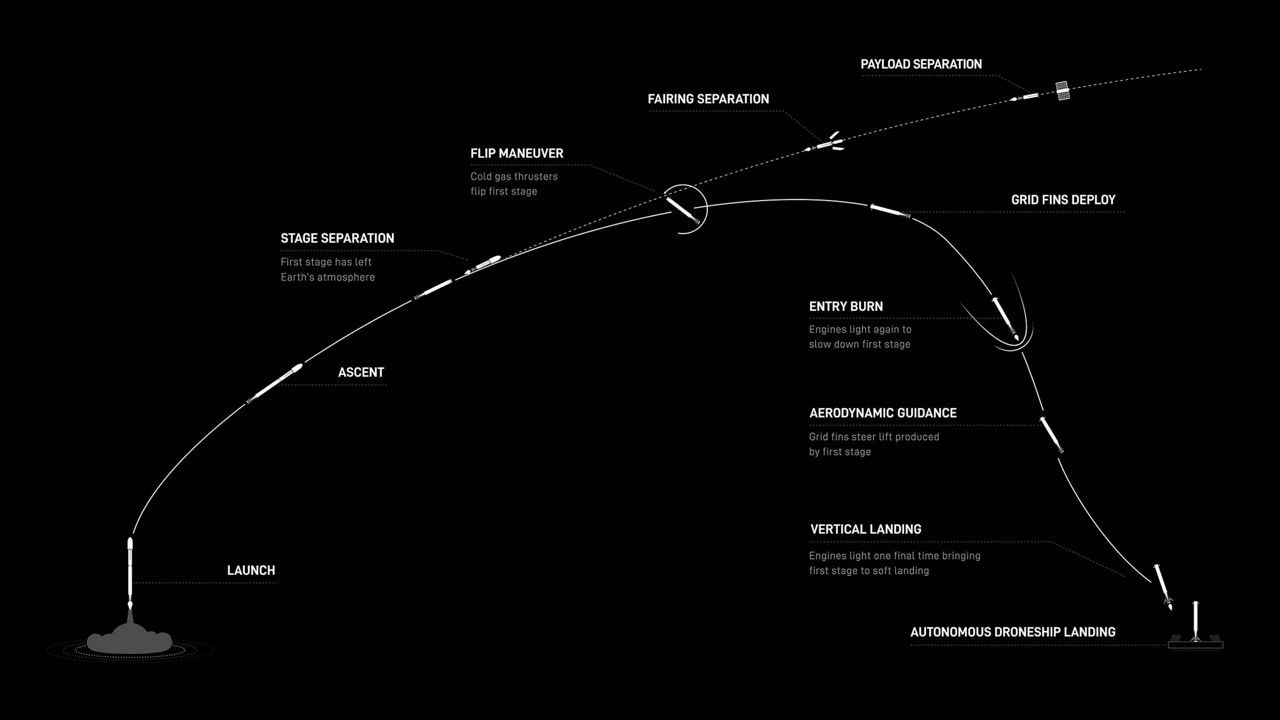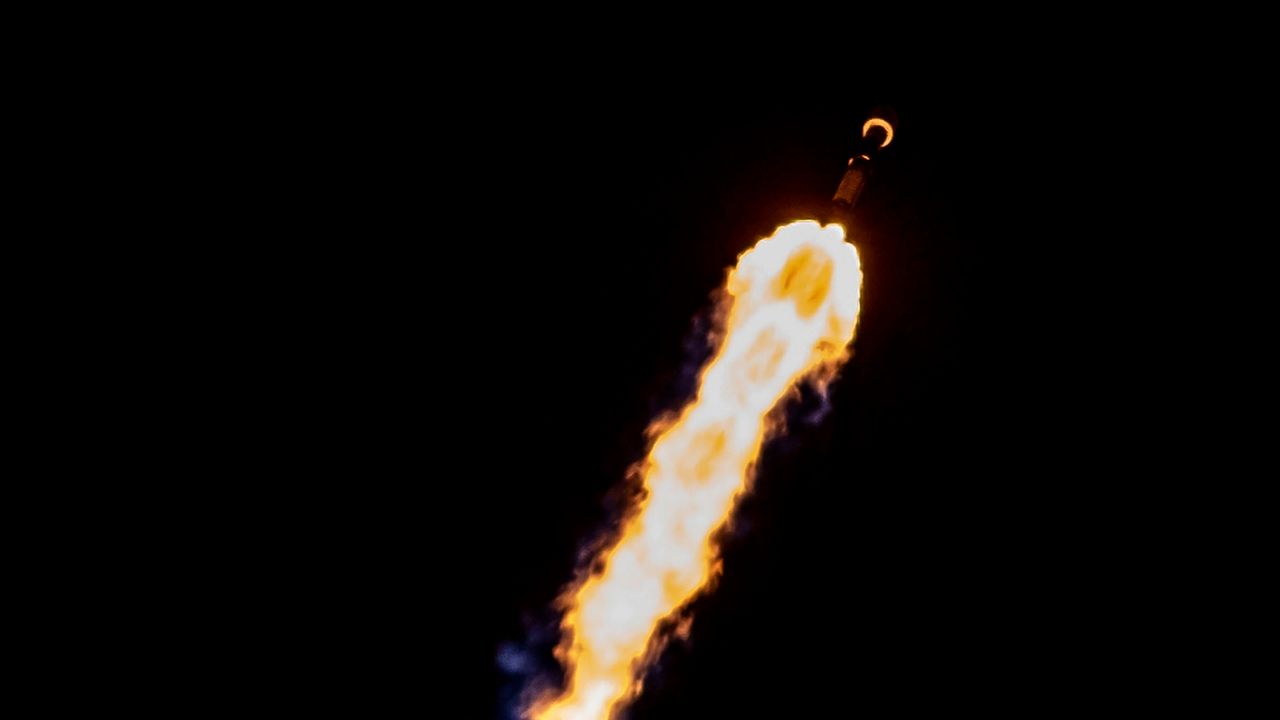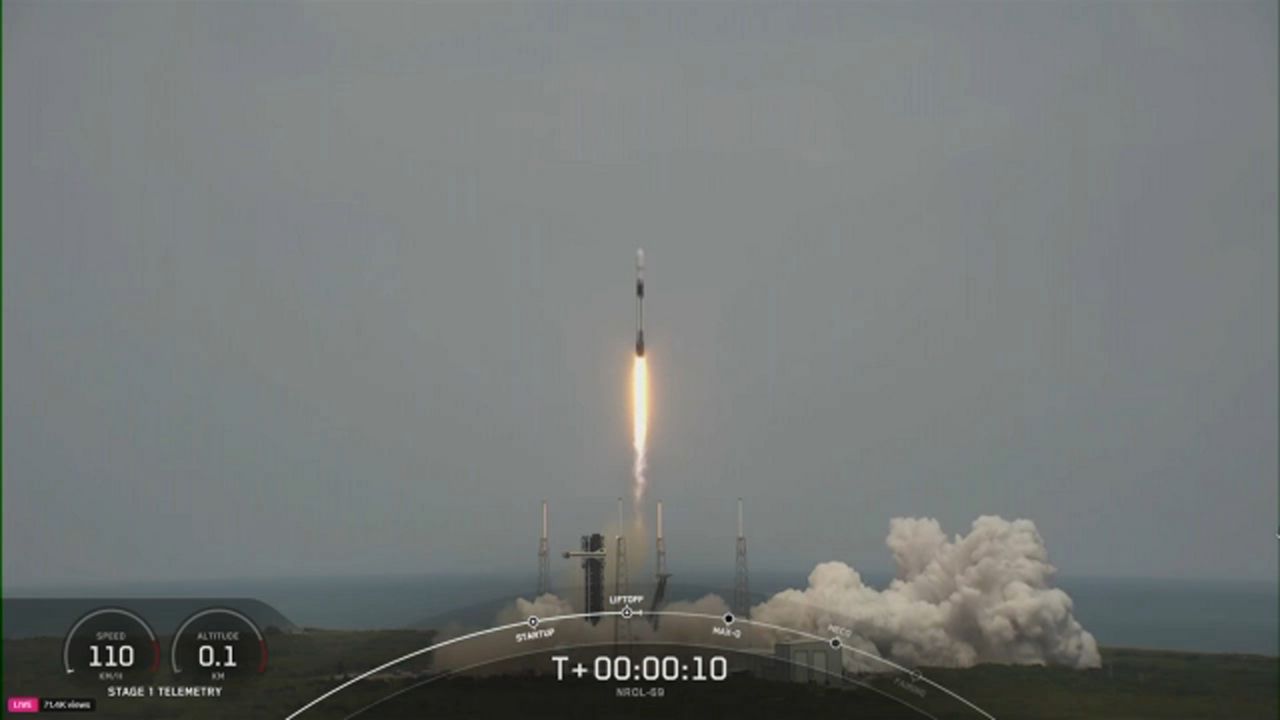CAPE CANAVERAL SPACE FORCE — Despite scrubbing the first launch attempt the night before, SpaceX was able to send up more than 20 Starlink satellites on Monday evening.
Liftoff! pic.twitter.com/TkcBM2iSHq
— SpaceX (@SpaceX) October 30, 2023
The Falcon 9 rocket left from Space Launch Complex 40 at Cape Canaveral Space Force Station at 7:20 p.m. ET.
Monday night’s mission had a total of eight backup attempts starting at 7:20 p.m. ET until 10:22 p.m. ET, SpaceX stated.
For Monday night’s launch attempt, the 45th Weather Squadron called for a 95% chance of good launch conditions, with the only concerns being the cumulus cloud rule.
Go here to learn about NASA’s launch weather criteria for the Falcon 9 rocket.
Pushed back and a scrub
On Sunday night, it was supposed to go up at 8:17 p.m. ET, but as the countdown clock reached zero, the nearly 230-foot-tall rocket did not ignite and leave the launch pad as planned.
At the 7 minute, 50 second mark of the X live feed (formerly known as Twitter), a SpaceX official broke in and said the launch team would be scrubbing the Starlink 6-25 mission.
“We had an abort. … We’ll be setting up for a 24-hour recycle. We’re scrubbed for launch attempt this evening,” said a SpaceX official during a live feed on X.
Watch Falcon 9 launch 23 @Starlink satellites to orbit https://t.co/ljWSq9RcpO
— SpaceX (@SpaceX) October 30, 2023
The launch crew drained the Falcon 9 rocket of thousands of gallons of propellent and started to get ready for Monday night’s liftoff.
The launch was originally scheduled to leave at 7:45 p.m. ET, but it was pushed back by 32 minutes. That new time was the first of seven back up launch attempts that went from 8:17 p.m. ET until 10:47 p.m. ET.
SpaceX did not give a reason why the launch was pushed back.
If this launch from the Space Coast had happened on Sunday, it would have been SpaceX's second one on that day. Earlier Sunday at 2 a.m. PT, the company launched 22 Starlink satellites to low-Earth orbit from the Vandenberg Space Force Base in California.
Going up
This Falcon 9’s first-stage booster, named B1077, has seven successful missions to brag about, not counting this one.
- Crew-5
- GPS III Space Vehicle 06
- Inmarsat I-6 F2
- CRS-28
- Intelsat G-37
- Starlink mission 5-10
- Starlink mission 6-13
After the stage separation, the first-stage booster landed in the Atlantic Ocean on the droneship Just Read the Instructions.
Falcon 9’s first stage has landed on the Just Read the Instructions droneship pic.twitter.com/apQwE5BpIH
— SpaceX (@SpaceX) October 30, 2023

Understanding the mission
The Starlink 6-25 mission sent up 23 satellites to low-Earth orbit.
They will join the thousands already up there which provide internet services to many places across the globe.
The Starlink company is owned by SpaceX.
Before the launch, Harvard-Smithsonian Center for Astrophysics’ Dr. Jonathan McDowell has recorded the following information about the Starlink satellites.
- 4,967 are in orbit
- 4,938 in working order
- 4,421 are in operational orbit








